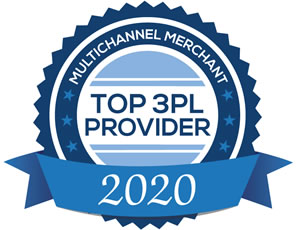
How to Successfully Switch Your 3PL
Moving your eCommerce fulfillment operation to a third-party warehouse does not have to be a painful process. Whether you have outgrown your in-house capabilities or have chosen to switch from one fulfillment service to another, good planning is good protection. What’s at stake is the ability of your business to meet its delivery commitments to customers, and I don’t have to tell you what that can mean to your company if there’s an interruption in service!
Transition planning is not a cookie cutter process. Each company has unique requirements and unique relationships with eCommerce fulfillment providers. What follows are some points to consider before, during and after the transition.
Understanding your logistics profile
Planning sessions will ensure that your fulfillment company understands your requirements and how to fit those requirements into their operational processes. We address all of these points when we work with a new client to setup order fulfillment. Here is a checklist of key points to discuss:
- Service levels required
- Sources of inventory and replenishment lead times
- Special product handling requirements
- Environmental requirements
- Fragile, liquid, hazmat
- Weights and dimensions
- Lot or serial number control
- Subscriptions
- Channel support
- Eg. Selling on Amazon
- Big box selling (EDI and routing guides)
- Small box retail
- Selling on multiple web platforms
- Managing inventory across channels
- Nuts and bolts
- Order volumes, line item volumes
- Seasonality
- How many SKU’s and SKU churn
- Who will handle customer service and returns
- Packaging and assembly requirements
- International shipping
In other words, make sure that your requirements are understood and that you understand how your new fulfillment company will handle those requirements.
Jonathan Leung, Flow Kimonos
"This is great, the transition was smoother than I ever imagined. Should have done this a long time ago."
Systems integration
Before moving your product into any warehouse, you need to be certain that your systems and those of your fulfillment partner can communicate flawlessly. At the very least, you should be able to connect your ERP and/or shopping cart(s) to your fulfillment provider’s system to send orders. You should also test the capability of sending information back into your operations – inventory status, tracking information and receipts. You should become familiar with your fulfillment company’s reporting capabilities and be certain that they meet your requirements. 
The fulfillment company should establish your product database in their system and conduct an audit conducted to make sure that the SKU’s are in synch and key product information has been passed. Having a methodology for adding and deleting SKU’s is also important.
Make sure to discuss shipping strategy and how it will be incorporated into your fulfillment partner’s systems. The strategy should include which carriers will be used under what circumstances. What are the strategies for ground, 2-3 day, overnight and international shipments?
When you are certain that your systems are properly integrated and your requirements understood it will be time to start the transition.
Communication
At the risk of stating the obvious, it’s important to communicate the new warehouse location and cutover dates to your customers, carriers, vendors and suppliers.
Location mapping
If practical, the receiving warehouse can map the locations for incoming stock in advance. That will save a good deal of time during the initial receiving process.
Moving day
A helpful technique for successfully avoiding service gaps is to move half of your product to the new location while continuing to ship from the old location. Once the initial product is fully processed, cut over to the new location for shipping and then move the remaining stock. This 2-stage movement of product will give you a level of insurance in case some key aspect of the transition has a glitch.
Date-sensitive stock may present some complications depending on the speed at which the stock is moving and the lot size. If it can be done, we suggest using the same strategy of splitting stock by expiration date.
Sprocket Express has advised numerous small and mid-sized companies on transitioning to a third-party eCommerce fulfillment service. Contact us to see how we can help.
A good transition takes some luck but remember-- the better you plan, the luckier you’ll get!
Business Tips and Industry News
For more news and tips on all things business and e-commerce, visit our e-zine. Our e-zine is also available as an rss feed.



